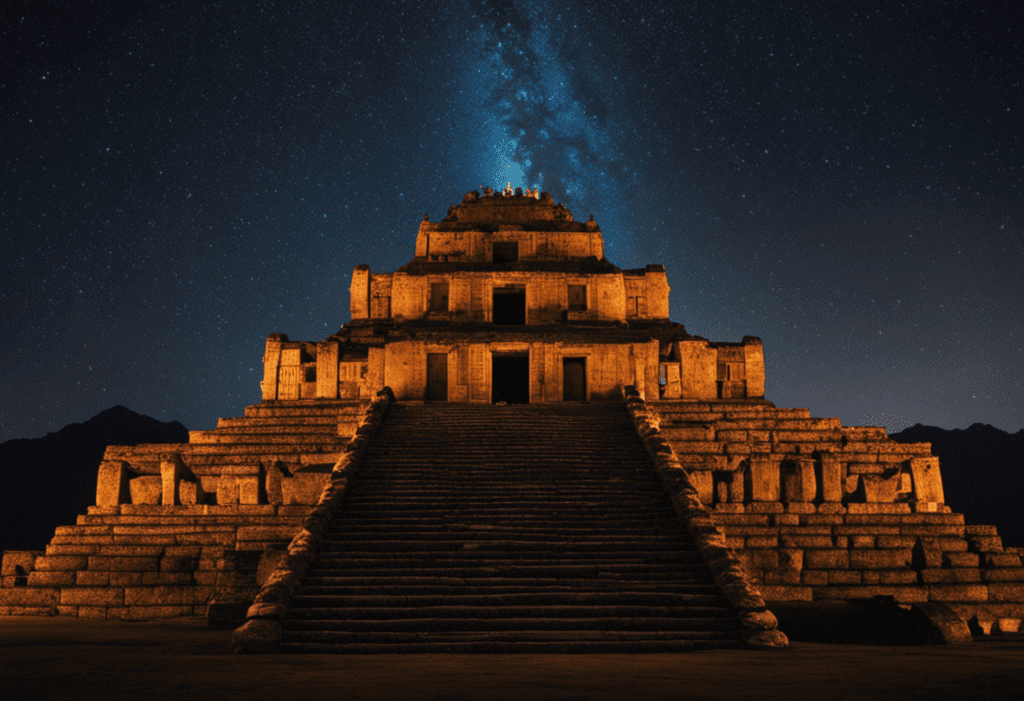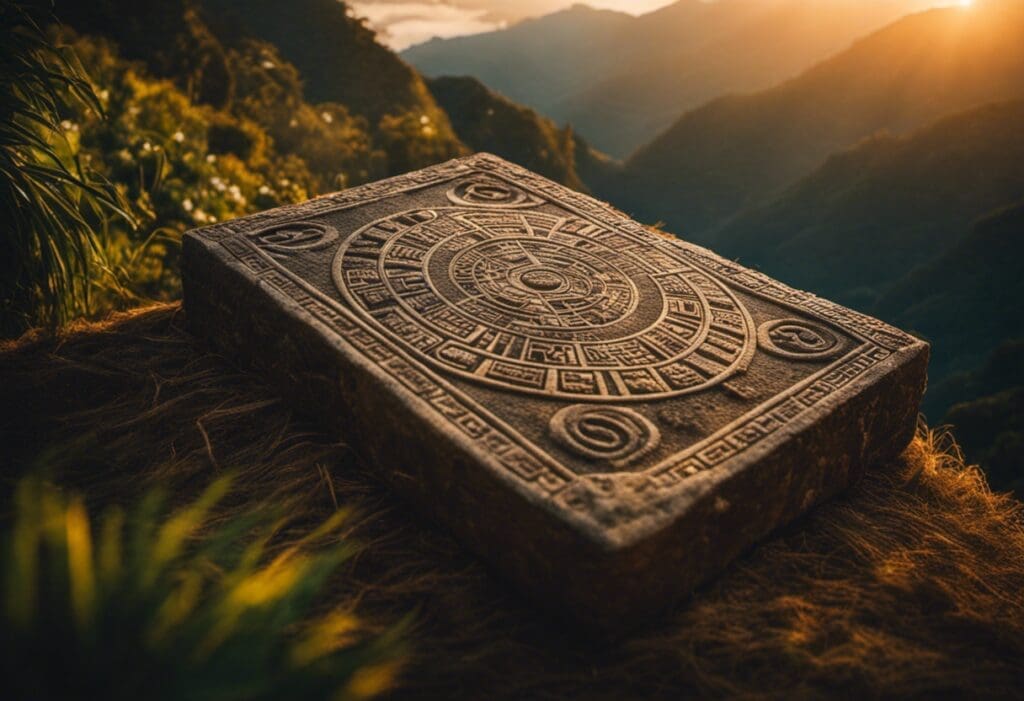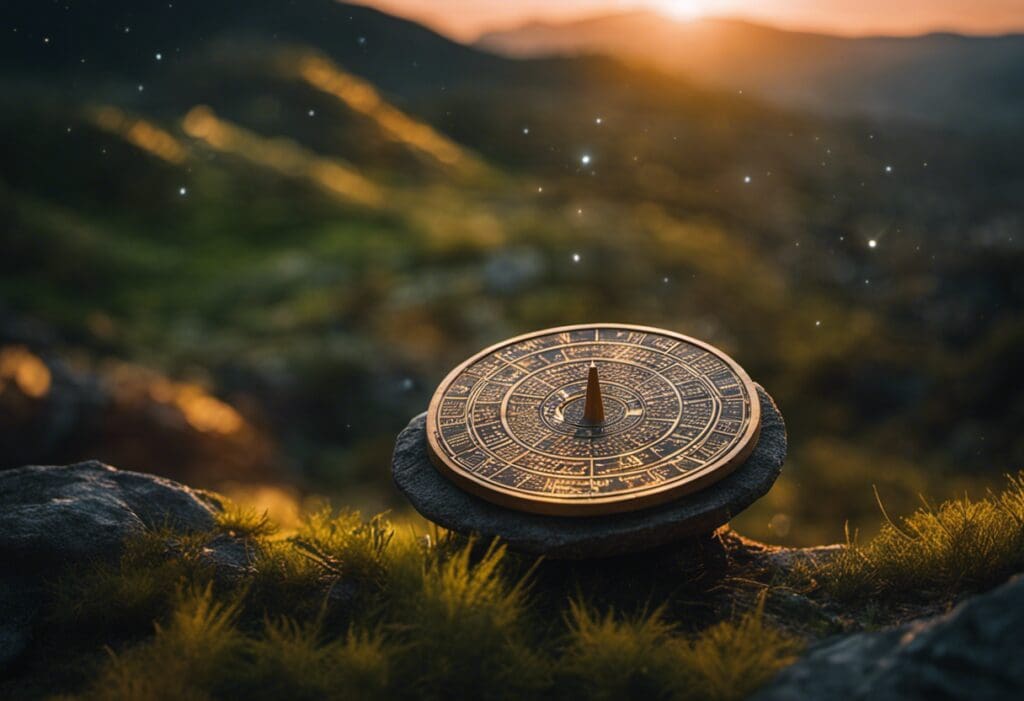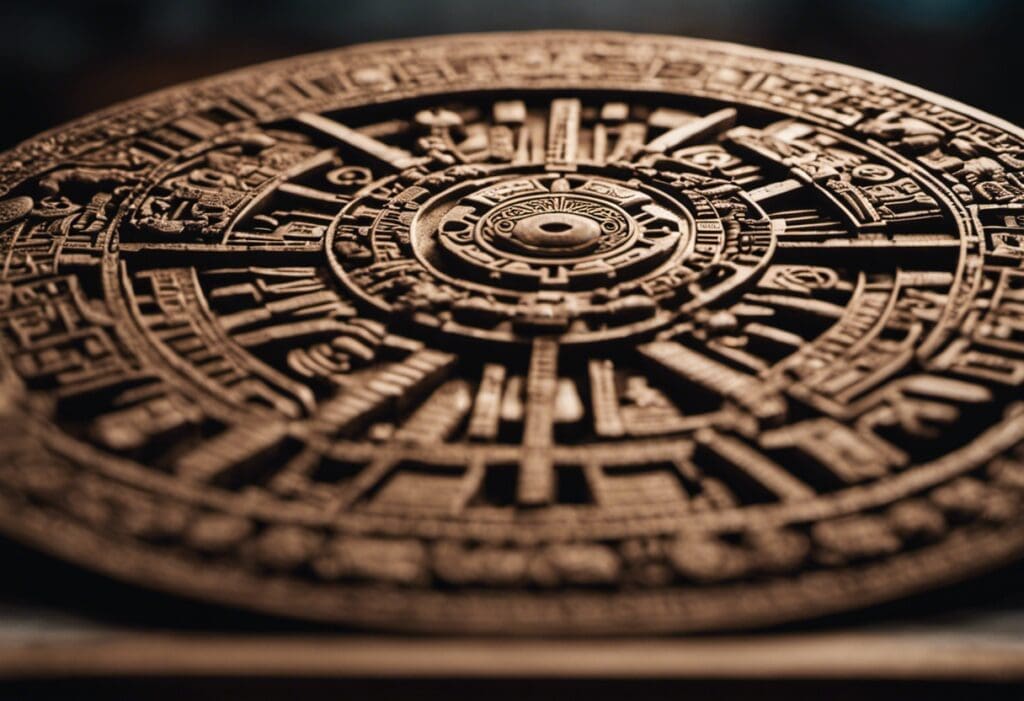How did the Inca civilization, known for their advanced astronomical knowledge, incorporate the movements of the stars and planets into their calendar?
In this article, we explore the astronomical significance of the Inca Calendar, uncovering the ways in which celestial observations shaped their rituals and agricultural practices.
From the sun and the moon to Venus and stellar alignments, we delve into the intricate connections between the Inca’s understanding of the cosmos and their daily lives.
Key Takeaways
- The Inca calendar, known as the ‘Tawantinsuyu,’ integrated solar and lunar observations.
- The Inca had observatories strategically positioned in the Andes Mountains, such as the Inti Watana in Machu Picchu and the Coricancha observatory in Cusco.
- Solar worship played a central role in Inca agricultural practices, with the Inca calendar determining the optimal time for planting and harvesting.
- The Incas developed a lunar calendar to track the moon’s phases and celebrated lunar festivals to honor the moon’s significance in their society.
The Inca Calendar: A Window to the Stars
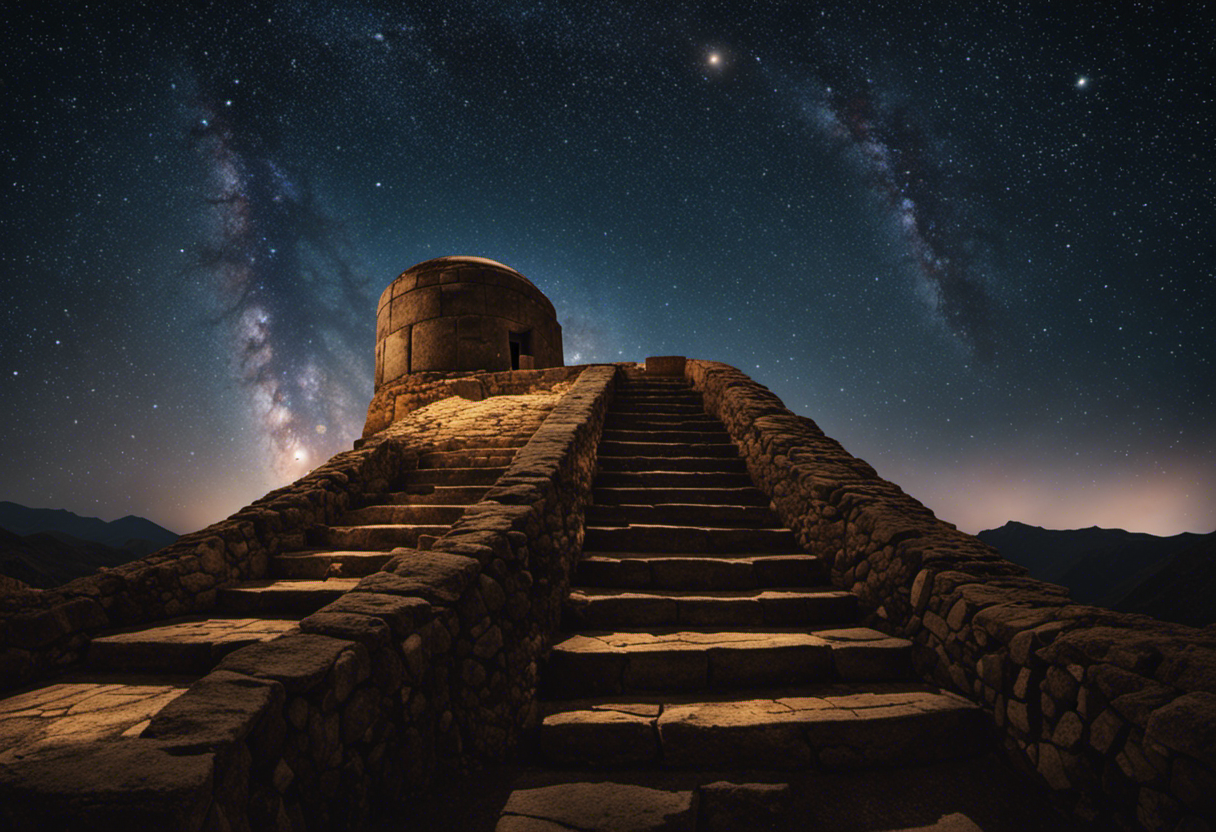

As a window to the stars, the Inca calendar offers a unique perspective on the celestial movements and their significance in Inca culture. Inca astronomy played a crucial role in the daily lives of the Inca people, as they relied heavily on celestial navigation for various purposes, including agriculture, religion, and timekeeping.
The Inca calendar, known as the ‘Tawantinsuyu,’ was a complex system that integrated both solar and lunar observations. It consisted of several different calendars, each serving a specific purpose. The main calendar, called the ‘Huata,’ followed the solar year and divided it into twelve months, with each month being associated with a specific agricultural activity.
Inca astronomers closely observed the movements of celestial bodies, such as the sun, moon, and stars, to accurately determine the changing seasons and agricultural cycles. They developed sophisticated methods to track the solstices, equinoxes, and other astronomical events, allowing them to anticipate the best times for planting, harvesting, and other agricultural practices.
Additionally, celestial navigation played a significant role in religious ceremonies and rituals. The Inca believed that the movements of the celestial bodies were directly linked to the actions and events happening on Earth. By aligning their religious practices with the celestial movements, they believed they could maintain harmony and balance in the world.
Mapping the Skies: Inca Observatories and Astronomical Knowledge
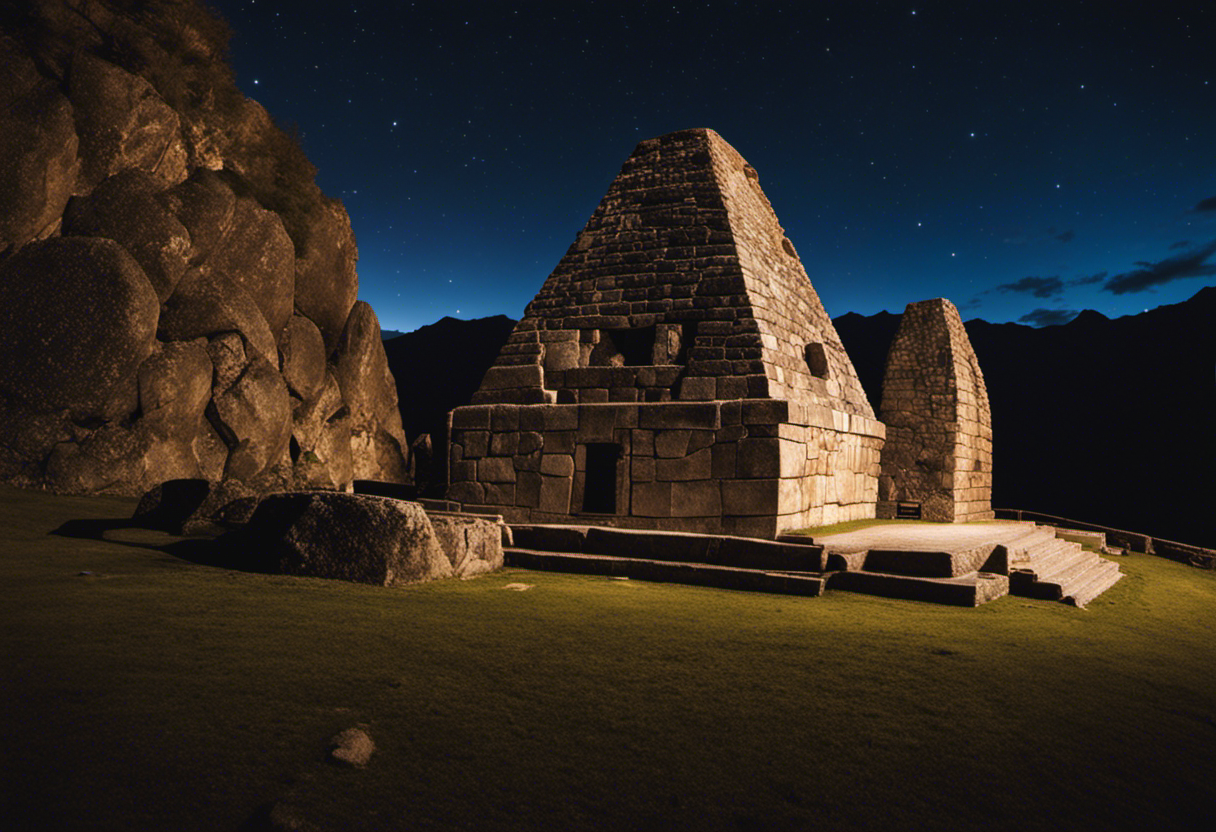

The Inca possessed an impressive array of observatories and a vast amount of astronomical knowledge, enabling them to map the skies with great precision. Their observatories were strategically positioned to take advantage of the unique geographical features of the Andes Mountains, allowing them to observe the celestial bodies with minimal interference.
Here are some key aspects of their astronomical knowledge and observatory systems:
- Inti Watana: This stone structure, located in the ancient city of Machu Picchu, was used as an astronomical observatory. It served as a solar clock, indicating the solstices and equinoxes.
- Observatory at Cusco: The city of Cusco was home to an observatory known as Coricancha. It had a series of windows and niches that were aligned with specific celestial events. These alignments helped the Inca priests predict agricultural cycles and plan religious ceremonies.
- Chankillo: Located in the coastal desert of Peru, Chankillo is a unique observatory consisting of a series of thirteen towers. These towers were strategically arranged along the horizon and used to track the movement of the sun throughout the year.
- Celestial Mapping: The Inca had an extensive understanding of celestial bodies and their movements. They were able to map the stars, planets, and constellations, and use this knowledge to navigate, plan agricultural activities, and determine auspicious dates for ceremonies.
The Inca observatories and astronomical knowledge highlight their advanced understanding of the cosmos and their ability to integrate celestial observations into their daily lives.
The Sun and the Inca: Solar Worship and Agricultural Practices
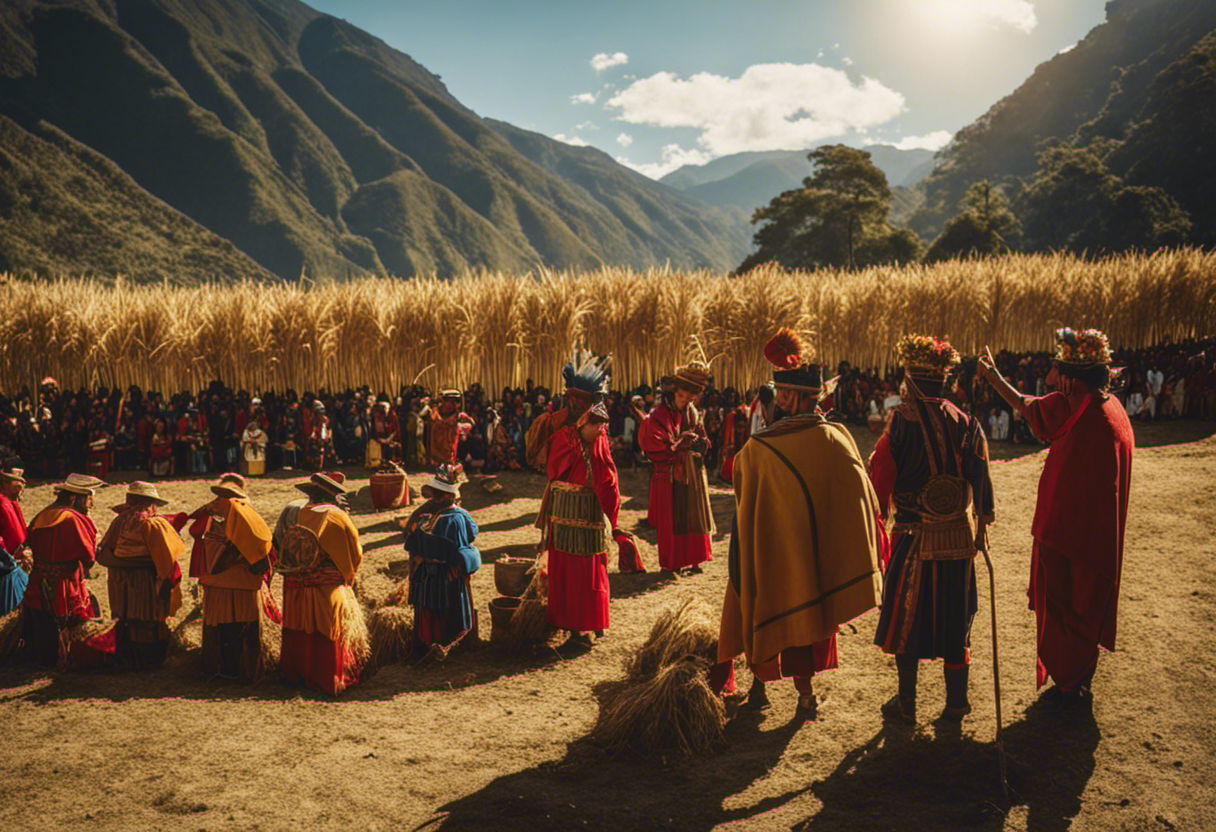

Due to their deep reverence for the sun, the Inca incorporated solar worship into their agricultural practices and religious rituals. The sun, known as Inti, was considered the most powerful deity in Inca mythology and played a central role in their daily lives. The Inca believed that Inti was responsible for the success of their agricultural endeavors, as the sun provided warmth and light necessary for the growth of crops.
Solar worship was an integral part of Inca agricultural practices. The Inca calendar, known as the Inti Raymi, was based on the movements of the sun and was used to determine the optimal time for planting and harvesting crops. The Inca would hold ceremonies and rituals to honor Inti and ensure a bountiful harvest. These rituals included offerings of food and drink, as well as the sacrifice of animals.
In addition to agricultural practices, solar worship also played a significant role in Inca religious rituals. The Inca believed that Inti was the father of all Inca rulers and therefore held a position of utmost importance. The Inti Raymi festival, held annually in Cusco, was a grand celebration of the sun and included processions, music, dancing, and sacrifices.
Lunar Cycles and Rituals: The Moon’s Role in Inca Society
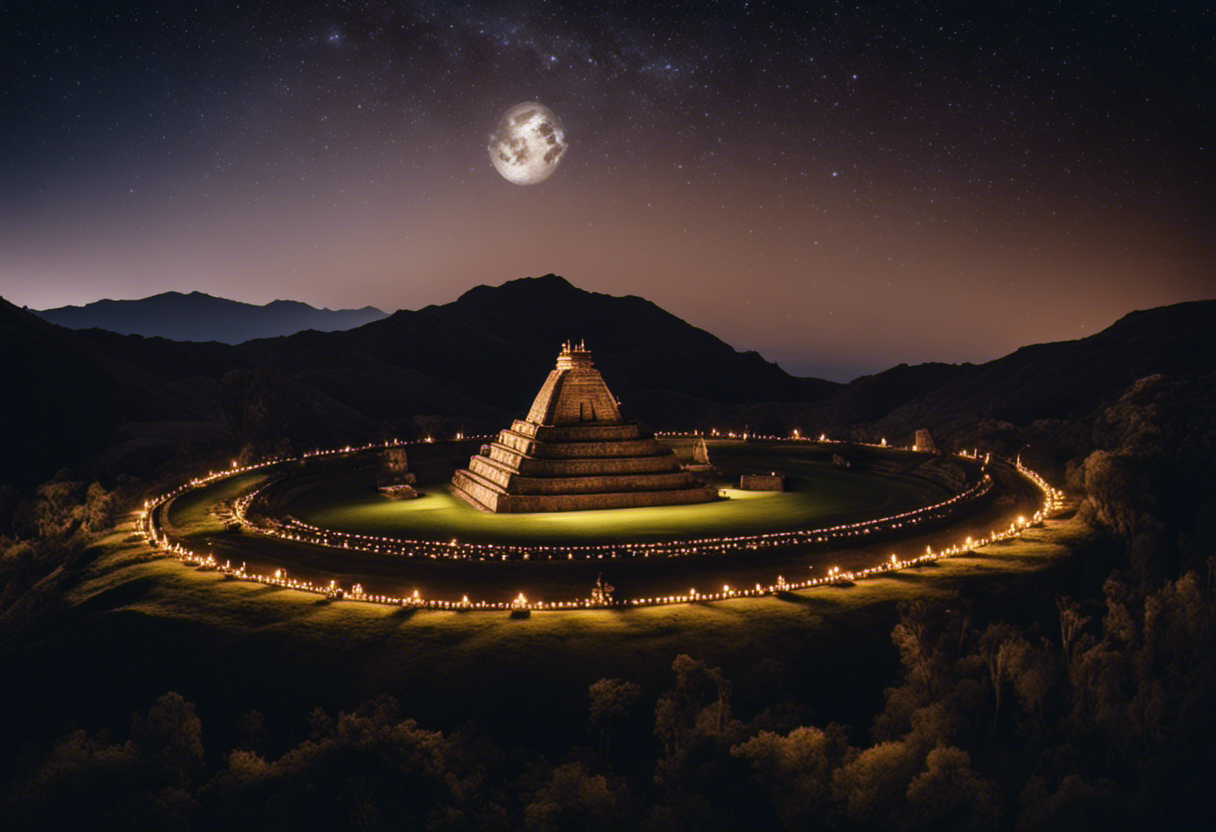

Although the sun held great importance in Inca society, the moon also played a significant role in their rituals and cultural practices. The Incas closely observed the moon’s cycles and incorporated its symbolism into their daily lives. Here are some key aspects of lunar rituals and symbolism in Inca society:
- Lunar Calendar: The Incas developed a sophisticated lunar calendar that tracked the moon’s phases. This calendar helped them determine the timing of agricultural activities, religious ceremonies, and important events.
- Lunar Worship: The Incas revered the moon as a deity and believed that it influenced various aspects of their lives, including fertility, growth, and harvests. They conducted rituals and made offerings to honor the moon and seek its blessings.
- Lunar Festivals: The Incas celebrated various lunar festivals throughout the year to honor the moon. These festivals involved elaborate ceremonies, dances, and feasts. They served as important social and religious gatherings.
- Lunar Symbolism: The moon symbolized femininity, fertility, and the cyclical nature of life in Inca culture. It was often associated with the goddess Mama Killa, who was believed to govern the moon and its powers.
The moon’s influence on the Inca society extended beyond its astronomical significance. It played a crucial role in shaping their rituals, traditions, and worldview.
Venus and the Inca: The Evening and Morning Star
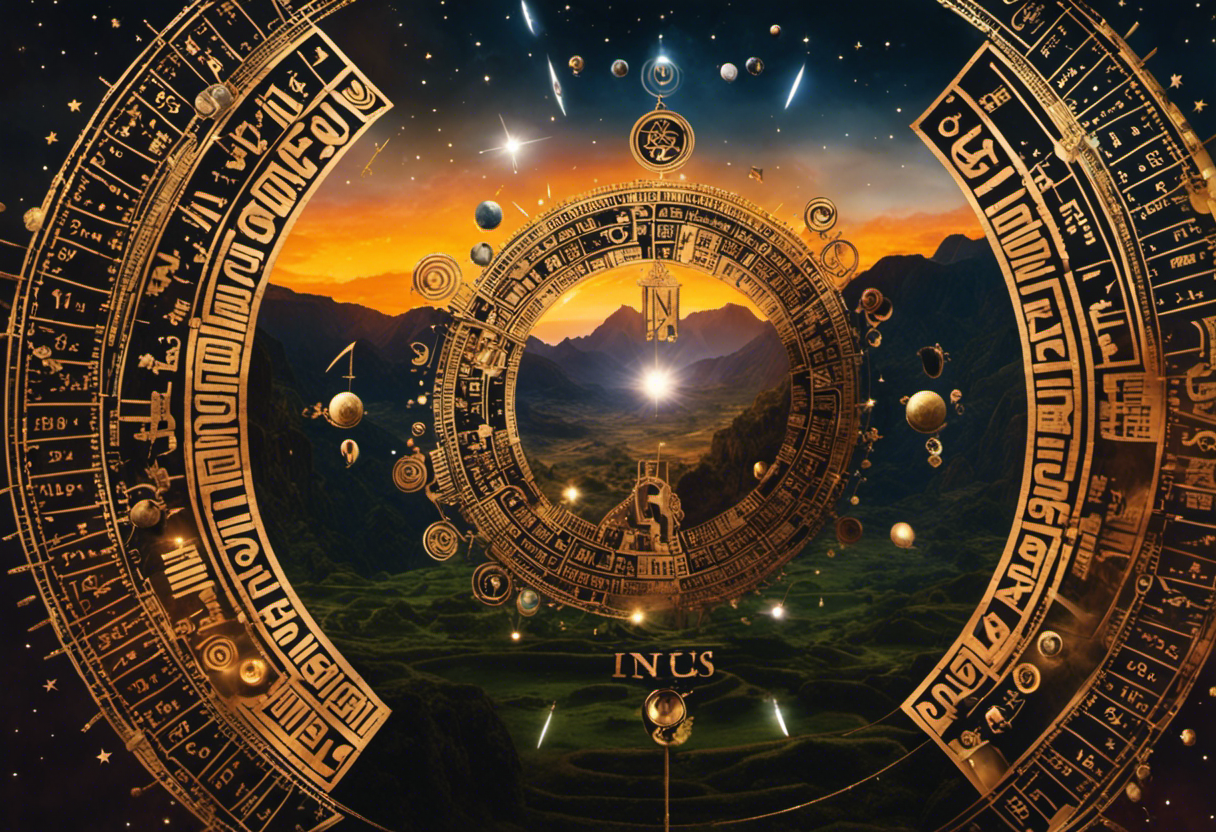

Venus, also known as the Evening and Morning Star, played a significant role in Inca astronomy and cosmology. The Inca people revered Venus as a deity and attributed great importance to its movements in the sky. In Inca mythology, Venus was believed to be the offspring of the Sun and the Moon, making it a celestial being of immense power and significance.
Astronomical symbolism related to Venus can be found in Inca art. The Inca artists depicted Venus in various forms, often incorporating it into their religious and ceremonial artworks. One common representation of Venus in Inca art is as a star with a face, symbolizing its divine nature. These artistic depictions served as a visual reminder of Venus’ significance in the Inca cosmology.
The Inca people closely observed the movements of Venus in the sky, particularly as the Evening and Morning Star. They believed that these appearances marked important events and influenced various aspects of their lives, such as agricultural activities and religious ceremonies. The Inca priests and astronomers carefully tracked Venus’ cycles and incorporated their observations into their calendar system.
Stellar Alignments and Sacred Sites: The Inca’s Geometric Connection to the Cosmos
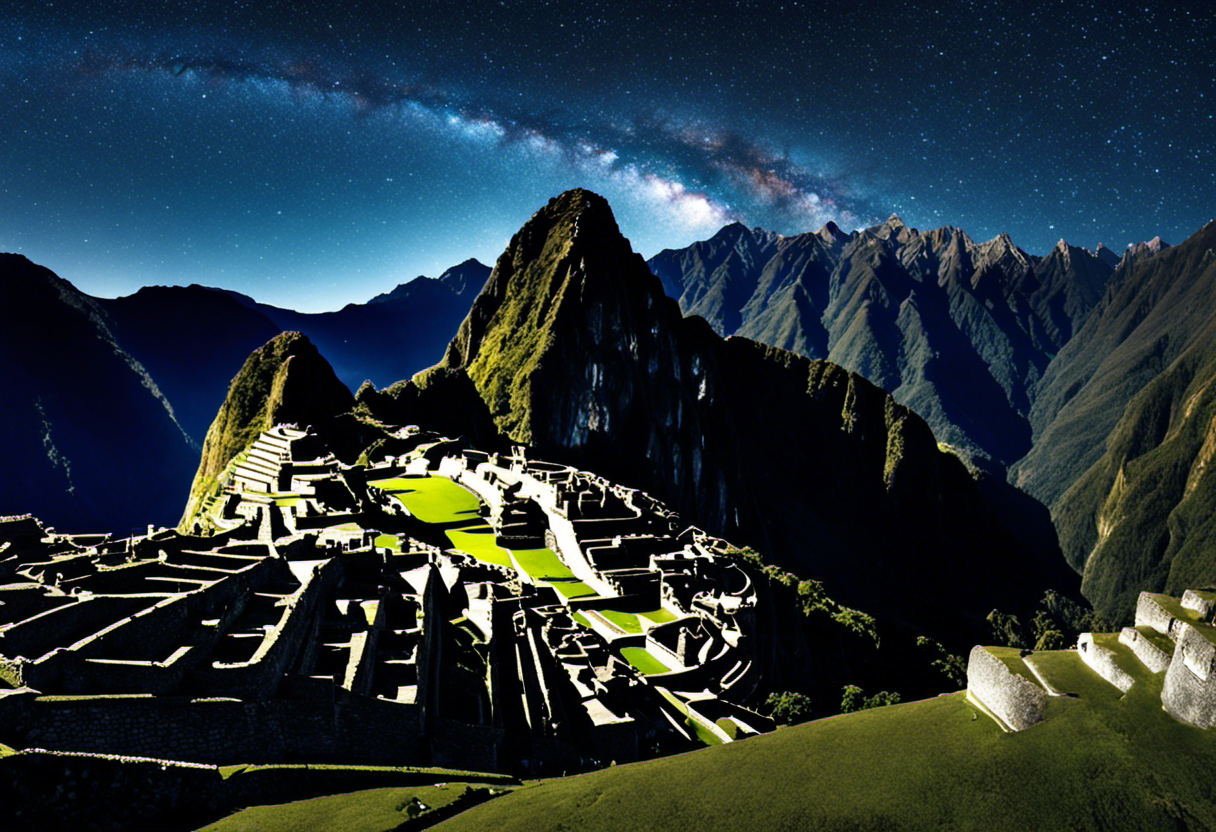

Stellar alignments played a crucial role in Inca architecture. Sacred sites and temples were strategically positioned to align with celestial bodies. These alignments held significant spiritual meaning for the Inca, as they believed that they connected the physical world to the cosmic realm.
The Inca’s deep understanding of astronomy and their incorporation of celestial knowledge into their rituals and ceremonies demonstrate their intricate connection to the cosmos.
Inca’s Celestial Architecture
The Inca’s intricate celestial architecture reveals their deep understanding of the cosmos and its connection to their sacred sites. Through their celestial navigation and use of astronomical symbolism, the Inca created structures that aligned with important celestial events and represented their spiritual beliefs.
- Inti Mach’ay: A sacred site dedicated to the worship of the sun, with its entrance perfectly aligned with the winter solstice sunrise.
- Coricancha: The Inca’s most important temple, where the walls were adorned with golden plates that reflected the sun’s rays during important solar alignments.
- Sacsayhuaman: This enormous fortress was built on a hill and designed to resemble a thunderbolt, symbolizing the importance of celestial forces in Inca culture.
- Machu Picchu: The sacred city of Machu Picchu was strategically located to align with the solstices and equinoxes, emphasizing the connection between the earthly and celestial realms.
These celestial alignments and sacred sites demonstrate the Inca’s belief in the harmonious relationship between the cosmos and their physical world.
Spiritual Significance of Alignments
As the Inca meticulously designed their sacred sites to align with celestial events, they demonstrated their profound spiritual connection to the cosmos through the geometric precision of their alignments. These alignments held great spiritual significance for the Inca, as they believed that by aligning their architecture with the movements of the stars, they could harness the cosmic energies and communicate with the divine.
The Inca incorporated these celestial alignments into their spiritual practices and conducted celestial ceremonies at specific times of the year. These ceremonies were performed to honor and connect with the gods, seek their guidance, and ensure the well-being of their society.
Astronomical Knowledge and Rituals
Demonstrating their deep understanding of celestial movements, the Inca incorporated precise stellar alignments into their sacred sites, showcasing their profound connection to the cosmos through geometric precision. These astronomical rituals and celestial ceremonies played a significant role in the Inca culture, connecting them to the divine and ensuring the harmony and balance of their society.
Here are some key aspects of their astronomical knowledge and rituals:
- Inti Raymi: A grand ceremony held during the winter solstice to honor Inti, the sun god.
- Qhapaq Raymi: An important festival celebrated during the summer solstice, marking the Inca New Year.
- Sacred Sites: The Inca built their temples and cities in alignment with celestial events, such as the solstices and equinoxes.
- Observatories: The Inca constructed observatories to study the stars, planets, and other celestial phenomena, aiding in their understanding of the cosmos.
These practices not only showcased their advanced knowledge of astronomy but also served as a means to connect with the celestial forces and maintain their spiritual and societal balance.
Conclusion
In conclusion, the Inca calendar holds great astronomical significance as it reflects their deep understanding and reverence for the celestial bodies. Their observatories and knowledge of the skies allowed them to map out the movements of the stars and planets.
The worship of the sun and the moon played a vital role in their agricultural practices and rituals. Additionally, the Inca recognized the importance of Venus as both the evening and morning star.
Lastly, their geometric connection to the cosmos through sacred sites and stellar alignments showcases their profound relationship with the astronomical world.
Like a captivating tapestry woven with celestial threads, the Inca calendar offers a mesmerizing glimpse into their cosmic understanding.

